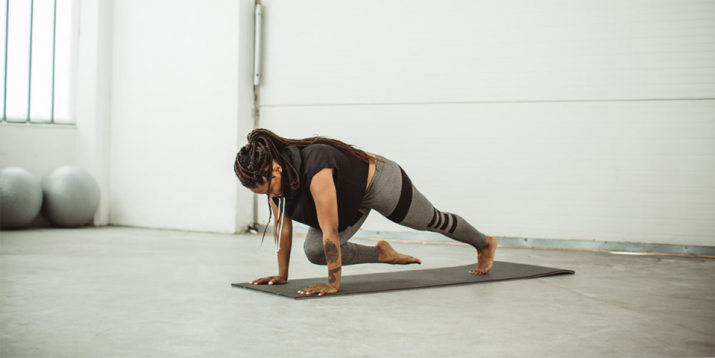How to Do the Spiderman Plank for Superheroic Strength

Planks are tough, there’s no question about it. But they can also get pretty monotonous, and once you can hold a plank for 60 seconds, it’s time to look for new and harder variations.
Keep your plank game strong by adding the Spiderman plank into your routine. You’ll get all benefits of a regular plank, and so much more.
“In our daily lives, especially if you have a desk job, we are constantly hunching over,” says AFAA trainer Angelica Segura of MELT° prjct. “The Spiderman plank helps with posture, aligning the body, and strengthening the core in a completely different way than your typical crunches would.”
This is also a great move for improving hip mobility, which is super important for frequent desk-sitters.
We spoke with Segura about the proper form for a Spiderman plank, what muscle groups it strengthens, and variations to make it harder or easier.
Spiderman Plank: Step-by-Step Instructions
- Start in a plank position with your hands stacked underneath your shoulders, feet about hips-width apart. Engage your abs, squeeze your glutes, and make sure your neck is in line with your spine so that there is a straight line from your head to heels.
- Keeping your hips as level as possible, bend your right leg to bring your right knee as close as possible toward your right elbow. Pause, and then step back to the plank position.
- Repeat on your left side, bringing your left knee up to your left elbow.
- Continue alternating sides until all reps are complete.
How to Make the Spiderman Plank Easier
If you notice yourself losing your form (moving your hips up or down or over-arching your back), start by just raising a foot a few inches off the ground.
- Start in a plank and lift one foot off the ground for two to three seconds. Then, bring it back down and switch feet.
- As you get more comfortable, you can start lifting your foot off the ground and moving it to the side, as demonstrated by the modifier in the video above from Rough Around the Edges. This will help you build the stabilization needed for the full Spiderman.
How to Make the Spiderman Plank Harder
Add in more upper body work by doing Spiderman plank push-up.
- Start in a high plank position.
- As you bring your knee to your elbow, lower down into a push-up.
- Then, push back up to the high plank position when you step your foot back.
Another way to make the Spiderman plank a little harder is by performing the move on your forearms rather than your hands.
- Get in a high plank position with your elbows stacked underneath your shoulders.
- Perform the move as usual, bringing your knee to your elbow, trying to keep your hips flat and even as you move.
Spiderman Plank: Muscles Worked
- Core and abdominal muscles (rectus abdominis, transverse abdominis, internal and external obliques, and your spinal erectors)
- Triceps
- Shoulders
- Glutes
Benefits of Spiderman Planks
“The abdomen itself isn’t solely built to move up and down [like with crunches], so it’s good to add in rotational movement to your exercises,” Segura says. This is exactly what the Spiderman plank does.
You’re also improving hip mobility with this move, which can help to loosen tight muscles, reduce lower-back pain, and improve knee health.
Add the Spiderman Plank to Your Workouts
Segura recommends adding in the Spiderman plank to your workout routine a few times a week as a warm-up or core exercise, where you’ll alternate legs for 30 seconds at a time, or perform 10 to 15 reps on each side.
Once you can do that, progress to a more challenging variation.
